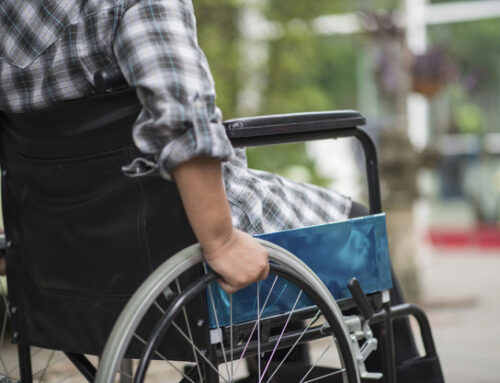Muscular Dystrophy
What is Muscular Dystrophy? The muscular dystrophies (MD) are a group of more than 30 genetic diseases characterized by progressive weakness and degeneration of the skeletal muscles that control movement. Some forms of MD are seen in infancy or childhood, while others may not appear until middle age or later. The disorders differ in terms of the distribution and extent of muscle weakness (some forms of MD also affect cardiac muscle), age of onset, rate of progression, and pattern of inheritance. Duchenne MD is the most common form of MD and primarily affects boys. It is caused by the absence of dystrophin, a protein involved in maintaining the integrity of muscle. Onset is between 3 and 5 years and the disorder progresses rapidly. Most boys are unable to walk by age 12, and later need a respirator to breathe. Girls in these families have a 50 percent chance of inheriting and passing the defective gene to their children. Boys with Becker MD (very similar to but less severe than Duchenne MD) have faulty or not enough dystrophin. Facioscapulohumeral MD usually begins in the teenage years. It causes progressive weakness in muscles of the face, arms, legs, and around the shoulders and chest. It progresses slowly and can vary in symptoms from mild to disabling. Myotonic MD is the disorder’s most common adult form and is typified by prolonged muscle spasms, cataracts, cardiac abnormalities, and endocrine disturbances. Individuals with myotonic MD have long, thin faces, drooping eyelids, and a swan-like neck. Is there any treatment? There is no specific treatment to stop or reverse any form of MD. Treatment may include physical therapy, respiratory therapy, speech therapy, orthopedic appliances used for support, and corrective orthopedic surgery. Drug therapy includes corticosteroids to slow muscle degeneration, anticonvulsants to control seizures and some muscle activity, immunosuppressants to delay some damage to dying muscle cells, and antibiotics to fight respiratory infections. Some individuals may benefit from occupational therapy and assistive technology. Some patients may need assisted ventilation to treat respiratory muscle weakness and a pacemaker for cardiac abnormalities. What is the prognosis? The prognosis for people with MD varies according to the type and progression of the disorder. Some cases may be mild and progress very slowly over a normal lifespan, while others produce severe muscle weakness, functional disability, and loss of the ability to walk. Some children with MD die in infancy while others live into adulthood with only moderate disability.
To obtain Full text: http://www.ninds.nih.gov/disorders/md/md.htm
What is Muscular Dystrophy? The muscular dystrophies (MD) are a group of more than 30 genetic diseases characterized by progressive weakness and degeneration of the skeletal muscles that control movement. Some forms of MD are seen in infancy or childhood, while others may not appear until middle age or later. The disorders differ in terms of the distribution and extent of muscle weakness (some forms of MD also affect cardiac muscle), age of onset, rate of progression, and pattern of inheritance. Duchenne MD is the most common form of MD and primarily affects boys. It is caused by the absence of dystrophin, a protein involved in maintaining the integrity of muscle. Onset is between 3 and 5 years and the disorder progresses rapidly. Most boys are unable to walk by age 12, and later need a respirator to breathe. Girls in these families have a 50 percent chance of inheriting and passing the defective gene to their children. Boys with Becker MD (very similar to but less severe than Duchenne MD) have faulty or not enough dystrophin. Facioscapulohumeral MD usually begins in the teenage years. It causes progressive weakness in muscles of the face, arms, legs, and around the shoulders and chest. It progresses slowly and can vary in symptoms from mild to disabling. Myotonic MD is the disorder’s most common adult form and is typified by prolonged muscle spasms, cataracts, cardiac abnormalities, and endocrine disturbances. Individuals with myotonic MD have long, thin faces, drooping eyelids, and a swan-like neck. Is there any treatment? There is no specific treatment to stop or reverse any form of MD. Treatment may include physical therapy, respiratory therapy, speech therapy, orthopedic appliances used for support, and corrective orthopedic surgery. Drug therapy includes corticosteroids to slow muscle degeneration, anticonvulsants to control seizures and some muscle activity, immunosuppressants to delay some damage to dying muscle cells, and antibiotics to fight respiratory infections. Some individuals may benefit from occupational therapy and assistive technology. Some patients may need assisted ventilation to treat respiratory muscle weakness and a pacemaker for cardiac abnormalities. What is the prognosis? The prognosis for people with MD varies according to the type and progression of the disorder. Some cases may be mild and progress very slowly over a normal lifespan, while others produce severe muscle weakness, functional disability, and loss of the ability to walk. Some children with MD die in infancy while others live into adulthood with only moderate disability.
To obtain Full text: http://www.ninds.nih.gov/disorders/md/md.htm




